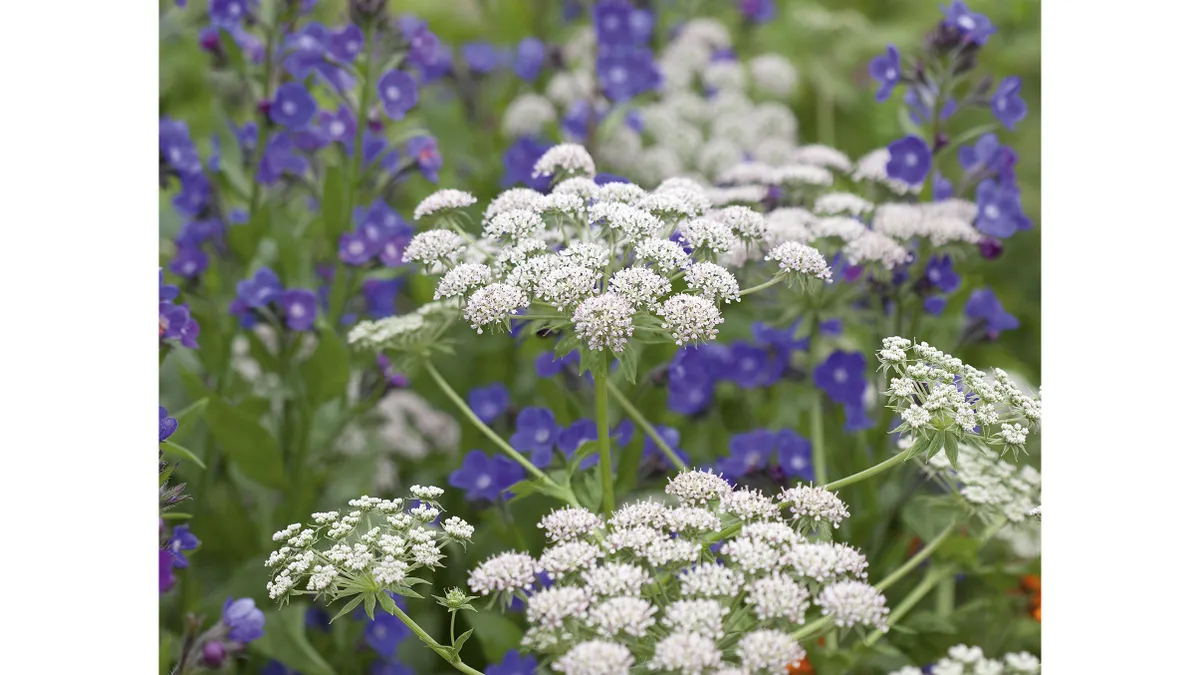What are umbellifers?
The Aplaceae is a vast family of around 300 genera and 3,000 species of annuals, biennials, perennials plus a few shrubs and trees. They have huge commercial value as many are important edible crops but conversely they include some of the most poisonous plants known to man. The majority are concentrated in the northern temperate zone although they are found sparingly throughout the rest of the world with some interesting (but difficult to grow) specimens, hailing from New Zealand and Australia.
When to grow umbellifers
In such a large family there are genera that flower in early spring; the majority flower in summer and some during autumn. Some architectural skeletons persist during the winter months providing templates for spider’s webs and hoar frost.
Where to grow umbellifers
There are genera suitable for shade and moist conditions while others prefer full sun and sharp drainage.
About the Apiaceae family
Apioideae, familiar to many in the forms of vegetables such as carrots, herbs including dill and coriander, and the frothy mass of small white flowers that wave aloft over ferny green foliage along hedgerows. This diaphanous haze is the flowering peak of the humble cow parsley (Anthriscus sylvestris), sometimes referred to as Queen Anne’s lace.
All are known as umbellifers, characterised by the formation of their flowers in umbels (meaning umbrella-like), a flat-topped inflorescence supported by a pedicel (a stem supporting a flower or seed), which all originate from the same point on the main stem. Other characteristics include hollow internodes (the space between two leaf joints), aromatic volatile oils emitting a herby odour and, in many genera, finely dissected foliage. Individual flowers are usually cream, white or yellow and small but so numerous they make substantial flowerheads. Many umbellifers are monocarpic, meaning they die after flowering but set prodigious quantities of seed. They may be annual, biennial or short-lived perennials.
Choosing the best umbellifers for your garden
Monocarpic umbellifers, such as angelicas, can create bold statements in a border but disappear after flowering. Cutting off the flowerheads before seeds set may cause offsets to develop at the base of the plant extending their life but is unreliable. An architectural perennial, such as Molopospermum peloponnesiacum, could be a better option; it is hardy and a dramatic subject, hailing from Spanish mountainsides where the deep taproot uses moisture from underground. Cenolophium denudatum, a perennial, white-flowered umbellifer, naturalises well in dappled shade and has been much vaunted in recent display gardens at the RHS Chelsea Flower Show. Zizia aurea or golden alexanders hails from North America and is valuable for dappled shade in moisture-retentive soil, as is a favourite of mine, the delicate Taenidia integerrima, a greenish-yellow-flowering perennial that can tolerate dry soils.
Ecology
Umbellifers are an important food source for the non-specific pollinators, such as flies, beetles, moths and hoverflies, which are vital for encouraging insect biodiversity and unlike bees aren’t attracted by a flower’s colour but by its foetid smell. The hollow stems also provide valuable overwintering accommodation for many beneficial insects, which burrow into the plant above the solid node and are well protected from the elements. From an ornamental viewpoint, their attractive dissected foliage is a good foil for border perennials, and architectural umbellifers, such as Molopospermum peloponnesiacum and Peucedanum verticillare, give structure and height. Purple-suffused foliage and flowers have occurred several times in the wild and eagle-eyed collectors have propagated and distributed them. Angelica sylvestris ‘Vicar’s Mead’ and Angelica sylvestris ‘Ebony’ have pink umbels. Pink-flowered umbellifers also include Pimpinella major ‘Rosea’,Pimpinella rhodantha and Chaerophyllum hirsutum ‘Roseum’. Purple-flowered Angelica gigas is grown for herbal medicine in Korea but makes a handsome garden specimen.
Propagating umbellifers
Long taproots are characteristic of this family allowing them to survive in dry, harsh conditions once the root has developed sourcing moisture and minerals from deeper levels. The root grows quickly so it is best to move seedlings into deep plug trays or pots as soon as possible.
Orlaya grandiflora, Visnaga daucoides, Daucus carota and Seseli gummiferum grow in poor, often infertile waste ground. Growing them in rich garden soils makes them larger and lusher but with changing climatic conditions, notably more wind events, there is more bruising of the foliage and root rock releasing the characteristic carroty aroma. Knowledge of their natural habitat and growing them in poorer conditions will improve their longevity. Seseli gummiferum is reasonably perennial in lean conditions but acts as a biennial when grown in richer soils.
Cultivating umbellifers
Most cultivated umbellifers are grown from fresh seed but some are difficult to germinate taking more than one season to emerge. The seeds contain oils that inhibit germination and which naturally break down by freeze then thaw in winter, resulting in a plethora of cotyledons emerging at what may seem an inopportune time of year. Gardeners are often recommended to place seed in the fridge, but germination is far more successful if seeds are sown in pots in the autumn and left in a cold frame or unheated glasshouse to receive the see-sawing temperature changes of winter weather. Annuals such as Ammi majus and Daucus carota germinate readily from spring sowing but Orlaya grandiflora germinates most successfully in autumn and is more erratic if sown early in the year.
13 of the best umbellifers
1
Ligusticum lucidum
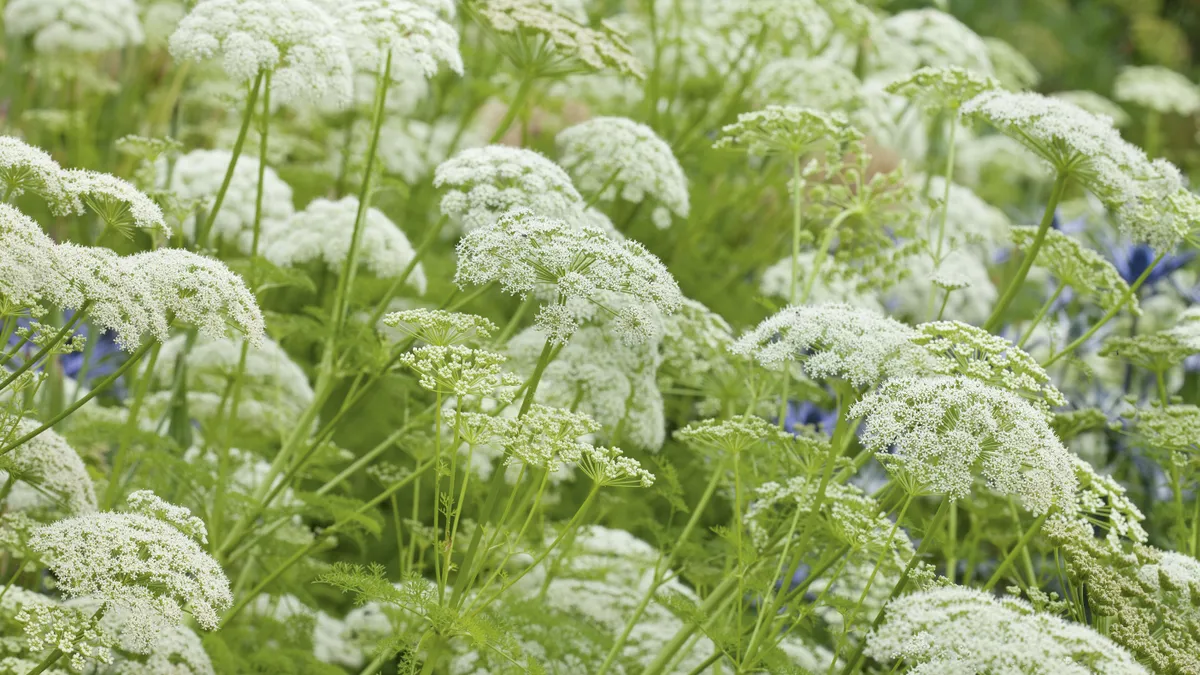
This handsome biennial has fine filigree glossy-green foliage with creamy-white umbels. It can tolerate some shade and requires moisture- retentive soil. It will seed around in suitable conditions. It is a great foil for other herbaceous plants. 60cm. RHS H7†.
2
Angelica sylvestris ‘Vicar’s Mead’
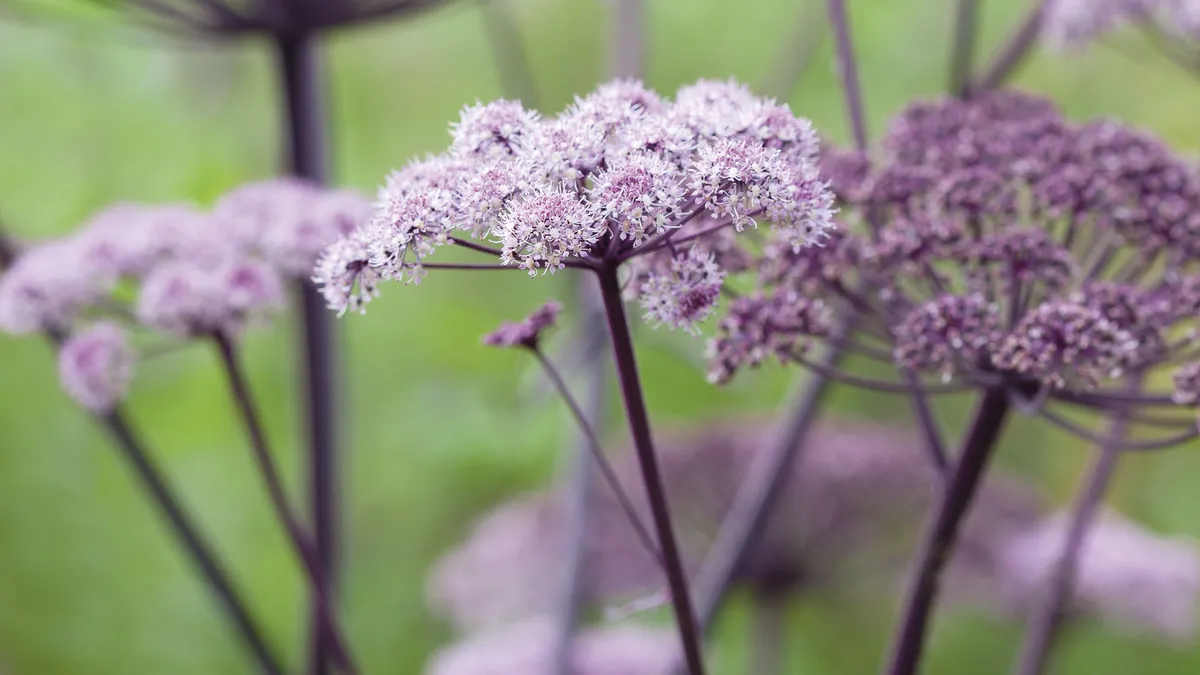
Deep purple-brown, dissected foliage emerges in spring and umbels of pink flowers in late summer contrast well with the burnished purple stems. It is biennial or a short-lived perennial. Angelica sylvestris ‘Ebony’ has darker, purple-black foliage. 1.2-1.5m. RHS H5.
3
Seseli gummiferum
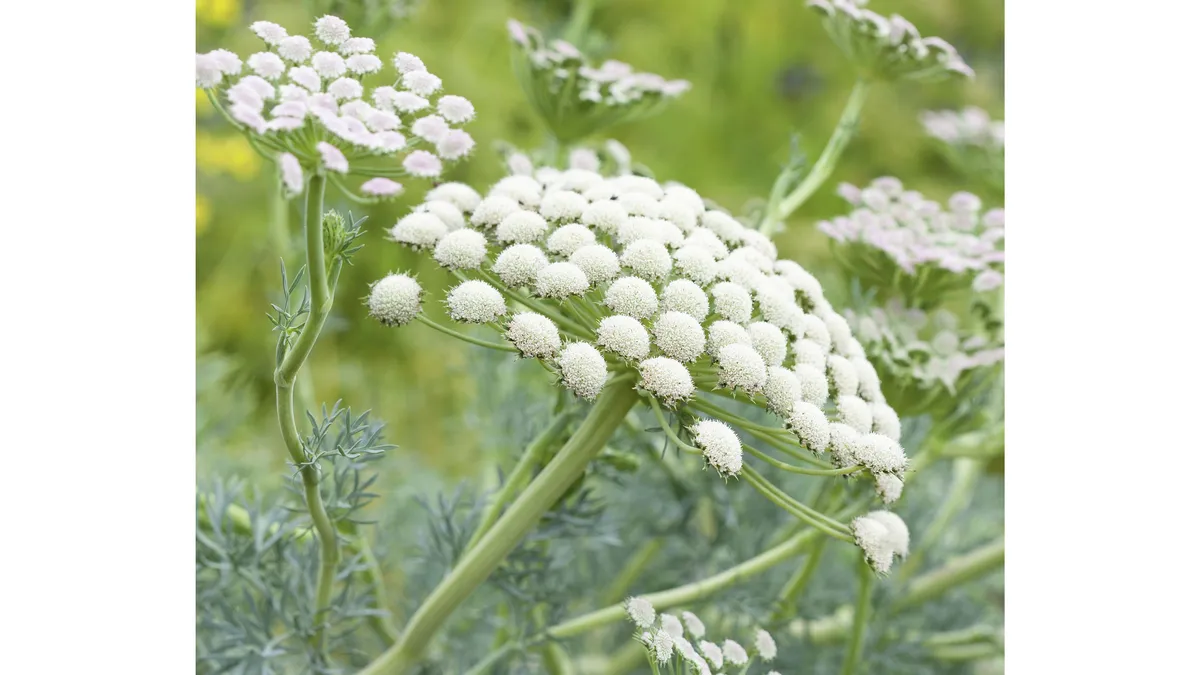
Low mounds of thick silvery-green foliage are characteristic of non-flowering specimens luxuriating in full sun and sharp drainage. Stout flowering stems unfurl to reveal circular umbels of white, pink-tinged flowers. 60cm. RHS H6, USDA 5a-9b
4
Molopospermum peloponnesiacum
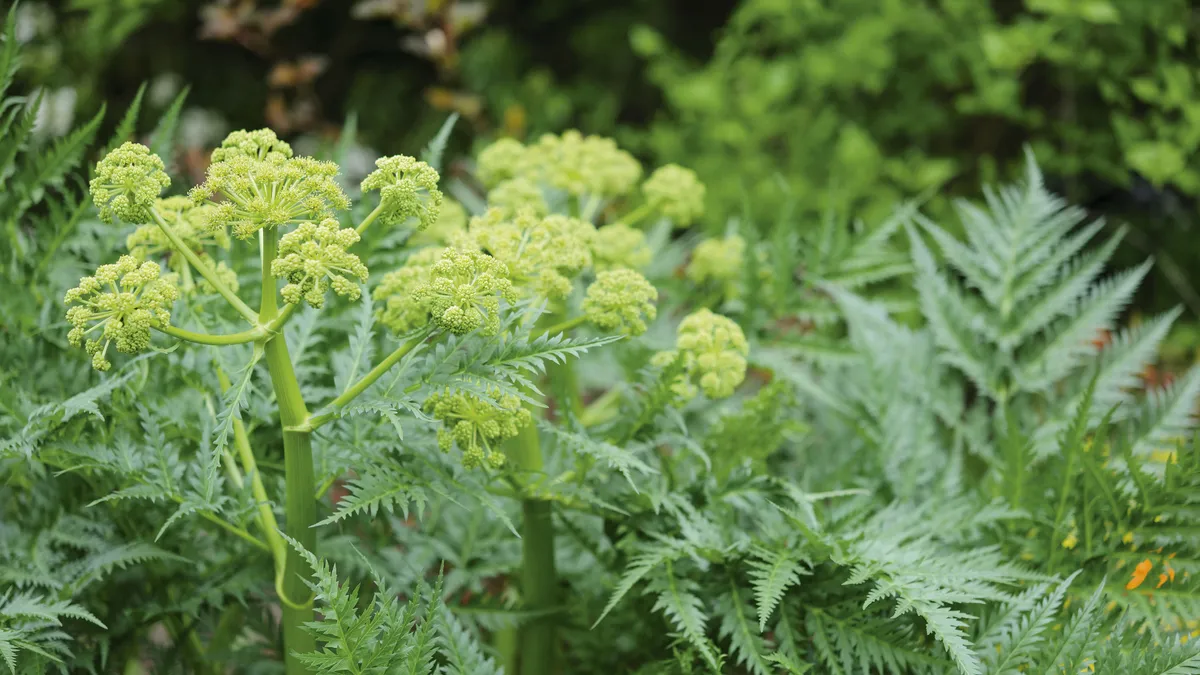
This dramatic perennial with a tongue-twister name has dissected, dark-green foliage and yellowish flowerheads. Thrives in moisture-retentive soil in sun or dappled shade. 1.2m. RHS H5, USDA 4a-8b.
5
Daucus carota ‘Dara’
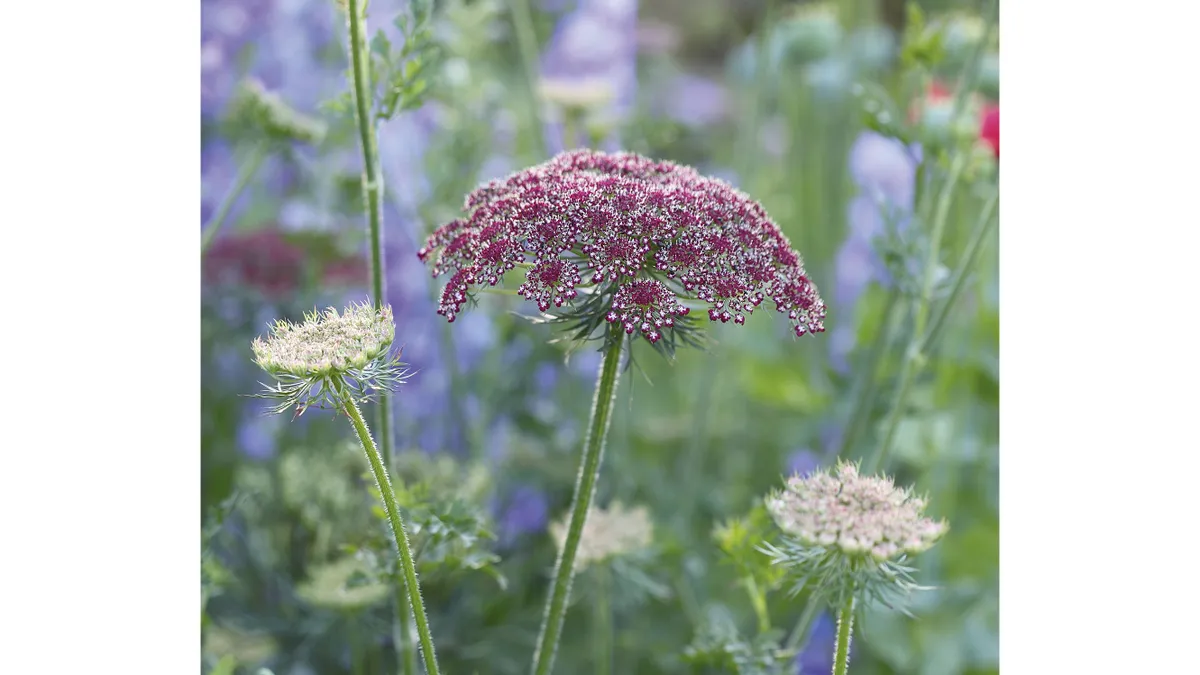
Originally bred for the cut flower trade, this purple- flowered wild carrot is not only good in a vase but an excellent addition to naturalistic borders. ‘Purple Kisses’ is another purple- flowered seed strain. 75cm. RHS H6, USDA 2a-11.
6
Anthriscus sylvestris ‘Ravenswing’
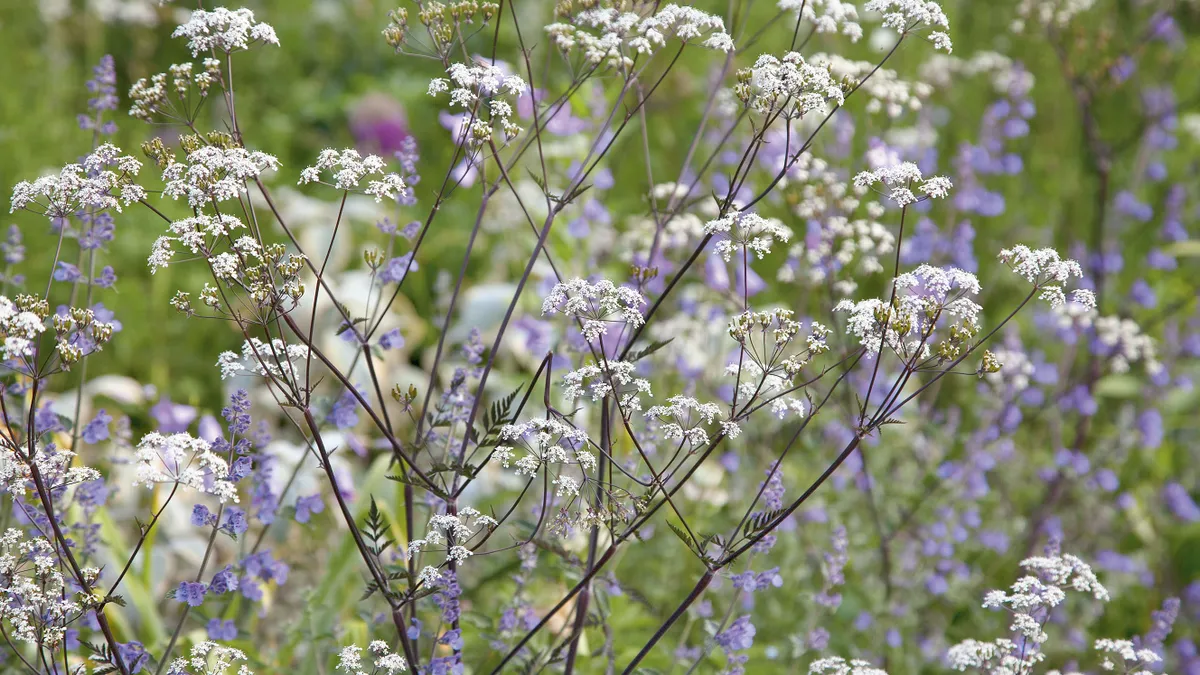
A purple-foliaged form of cow parsley. Isolated from the usual form it will seed true, easy to identify with its purple-suffused cotyledons. Throw away any green seedlings. 75cm. RHS H6.
7
Visnaga daucoides
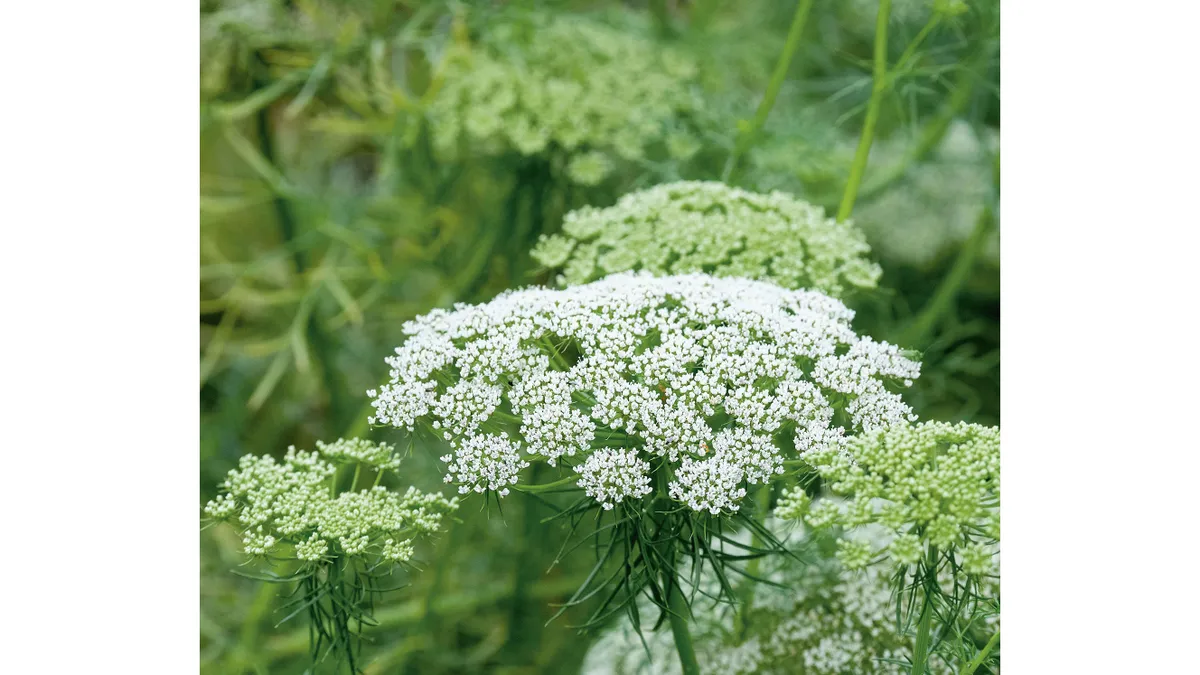
Attractive greenish umbels mature into large creamy- white flowerheads with a thicket of finely divided mid-green foliage. It is sturdier and shorter than the more familiar Ammi majus but provides greater substance. 90cm. RHS H6
8
Zizia aurea
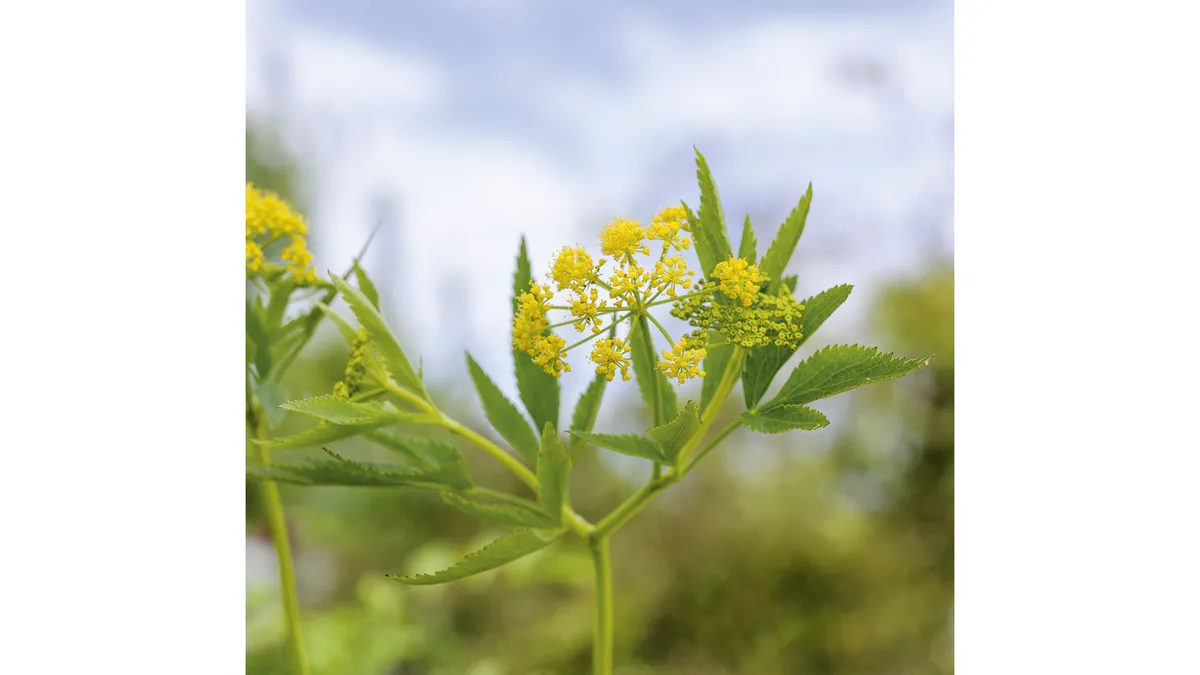
Known as golden alexanders, this yellow- flowered, native American perennial prefers moisture- retentive soil in shade or sun. Flowers for several weeks and grows almost as broad as it is tall. 60cm. RHS H7, USDA 3a-8b.
9
Orlaya grandiflora
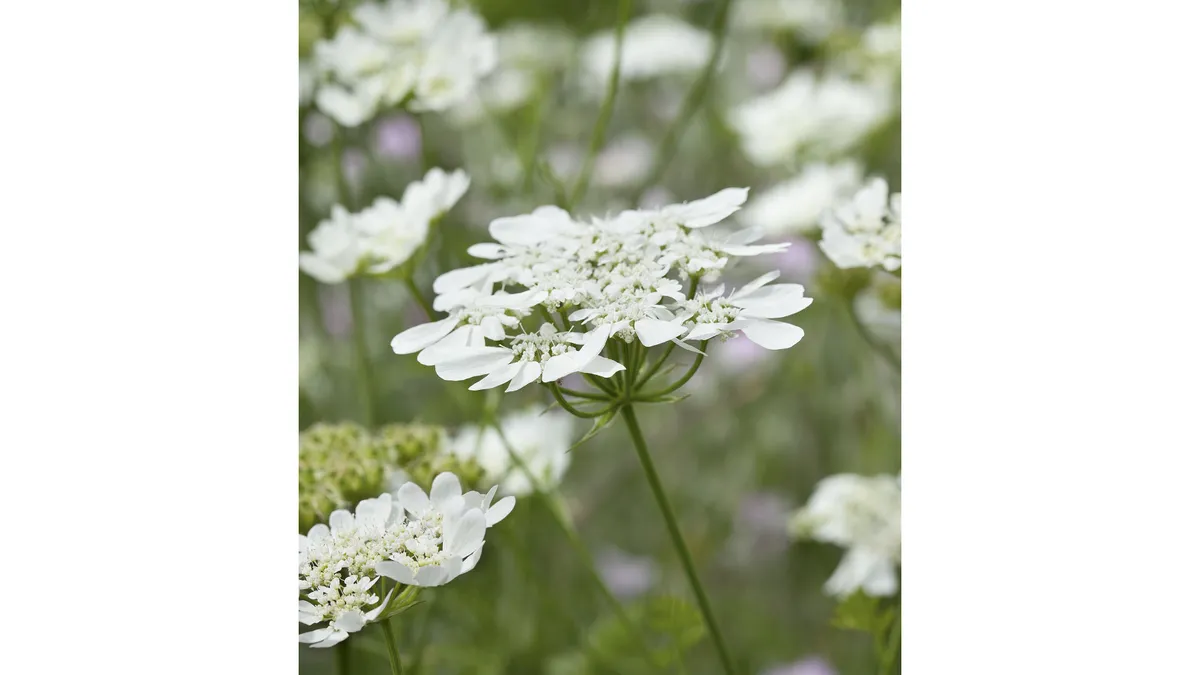
A charming annual with fine, filigree silvery foliage and pure-white umbels, preferring full sun and excellent drainage. It can be susceptible to carrot root fly damage so is best grown lean. 30cm. AGM. RHS H7.
10
Cenolophium denudatum
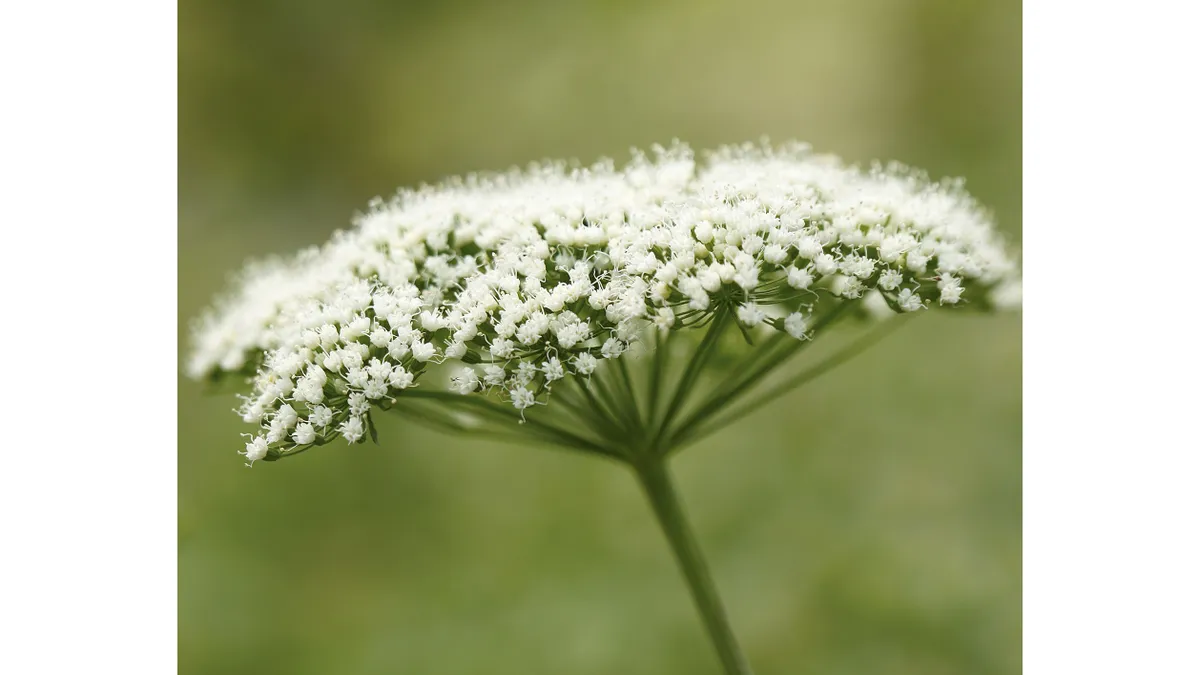
Flowering from late spring through summer, this white-flowered perennial with dark-green, ferny foliage is used widely in naturalistic schemes. Seeds freely so more suitable for a wild garden. 90cm. AGM*. RHS H6.
11
Anethum graveolens
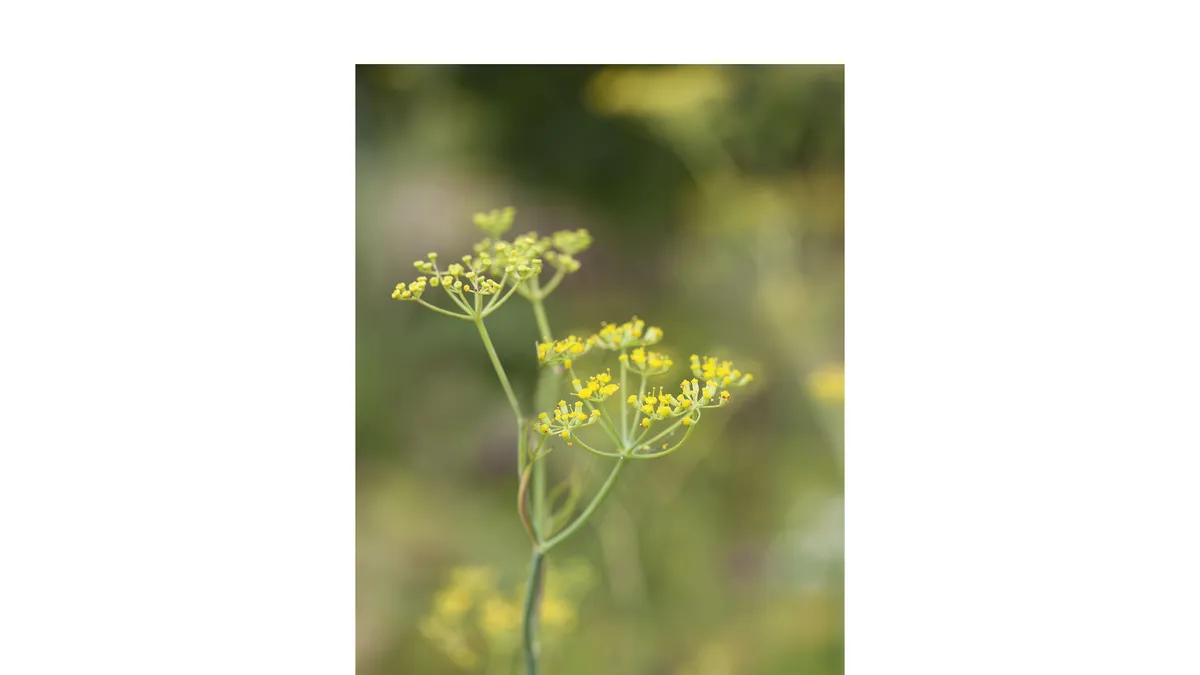
Dill is a fast growing annual with aromatic foliage used in cooking. Delicate greenish-yellow flowers appear above bright-green filigree foliage. Ridolfia segetum is a similar non-edible annual. 60cm. RHS H6, USDA 2a-11.
12
Peucedanum verticillare
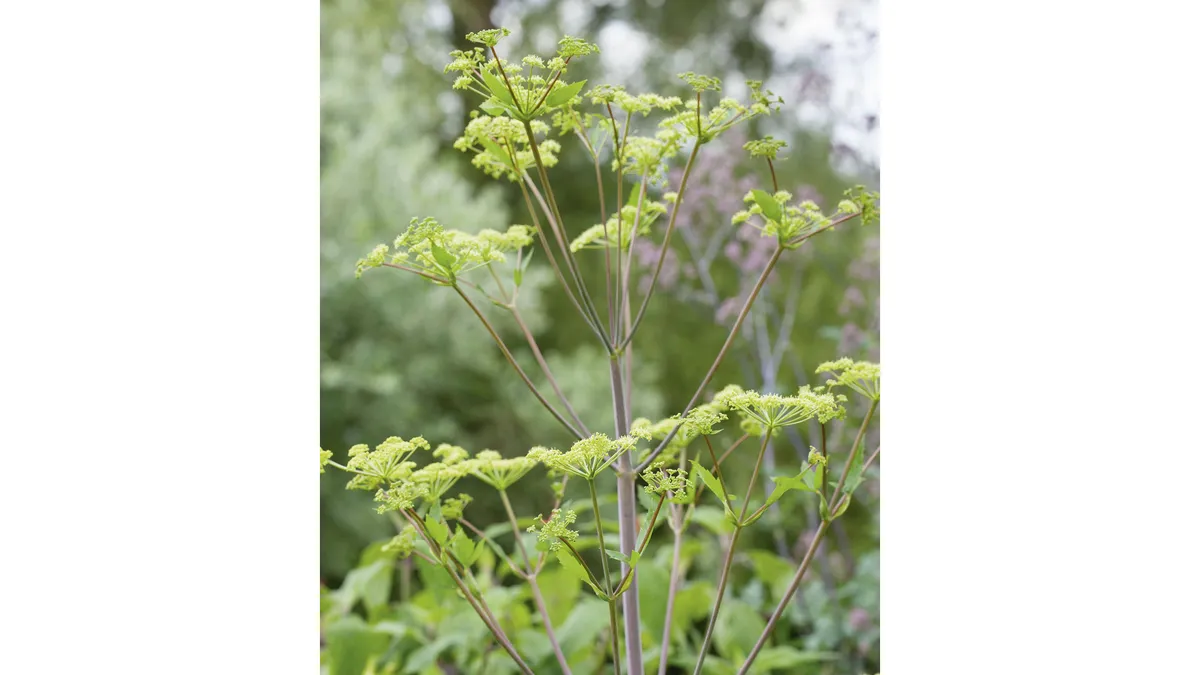
Delicate, pinkish-green young foliage, towering pink-suffused stems topped by yellow umbels are most impressive. Monocarpic, it can take several years to bloom and reach a staggering height. 3.4m. RHS H6.
13
Melanoselinum decipiens
Usually biennial, this umbellifer has a stout stem textured by leaf scars from previous leaves. Great plates of pinkish flowers top these sturdy plants, which are only hardy in favourable sites. 1.5m. RHS H3.
*Holds an Award of Garden Merit from the Royal Horticultural Society. †Hardiness ratings given where available.
Where to see and buy
- Binny Plants, Binny Estate, Ecclesmachan Road, Near Broxburn, West Lothian EH52 6NL. Tel 01506 858931, binnyplants.com
- Copton Ash Garden, 105 Ashford Road, Faversham, Kent ME13 8XW. Tel 01795 535919, coptonash.plus.com
- Edulis, 1 Flowers Piece, Ashampstead, Reading, Berkshire RG8 8SG. Tel 01635 578113, edulis.co.uk
- Great Dixter Nurseries, Northiam, Rye, East Sussex TN31 6PH. Tel 01797 254044, greatdixter.co.uk
- Phoenix Perennial Plants, Paice Lane, Medstead, Alton, Hampshire GU34 5PR. Tel 01420 560695, marina@phoenix perennialplants.co.uk
- Special Plants, Greenways Lane, Cold Ashton, Chippenham, Wiltshire SN14 8LA. Tel 01225 891686, specialplants.net
Author Marina Christopher is a nurserywoman who runs Phoenix Perennial Plants.
